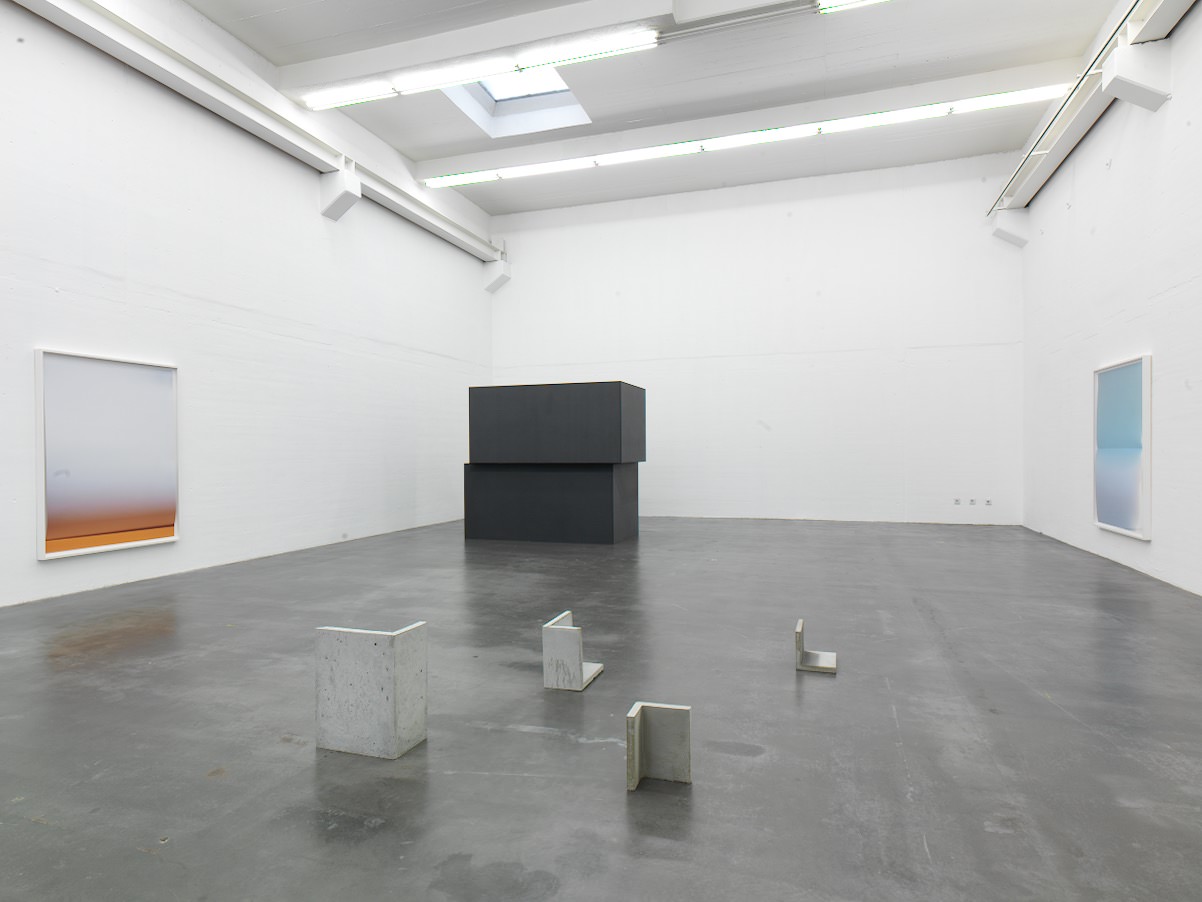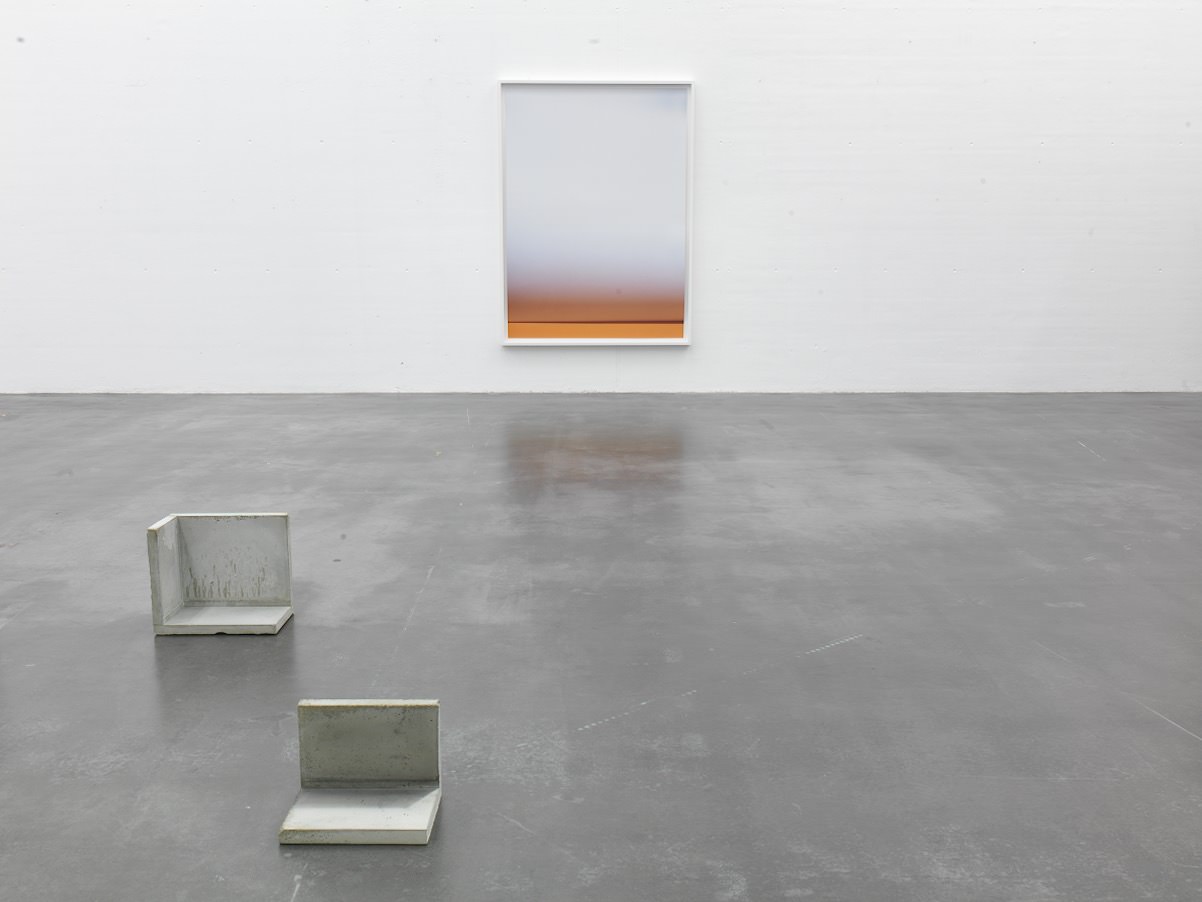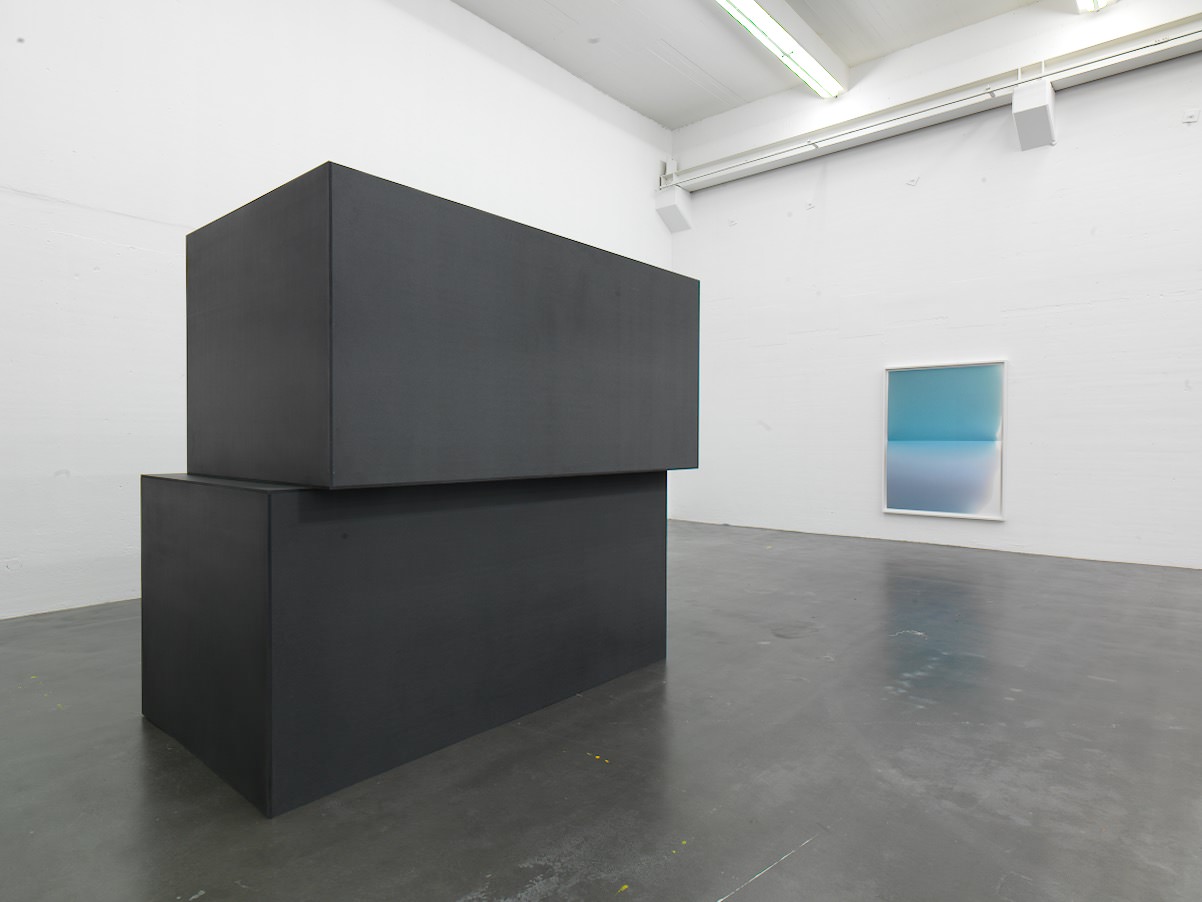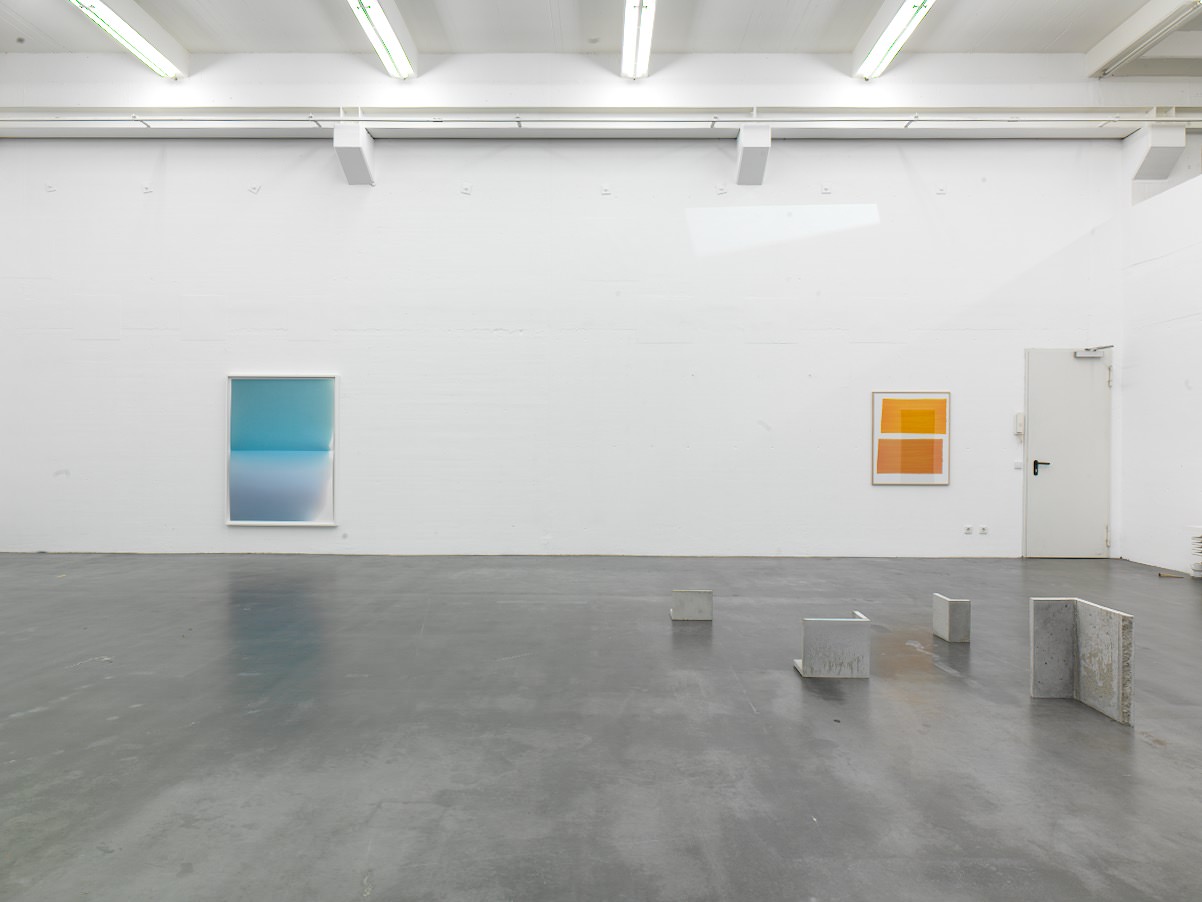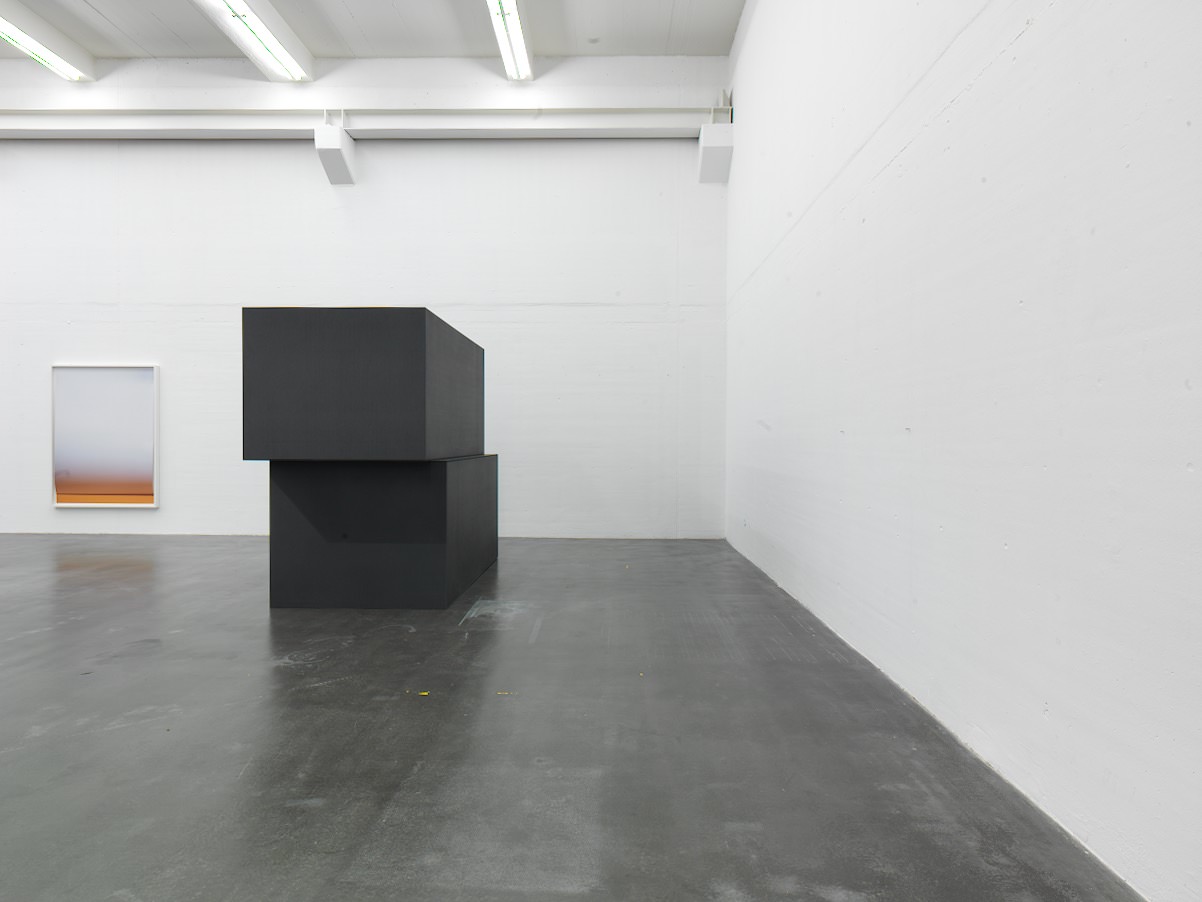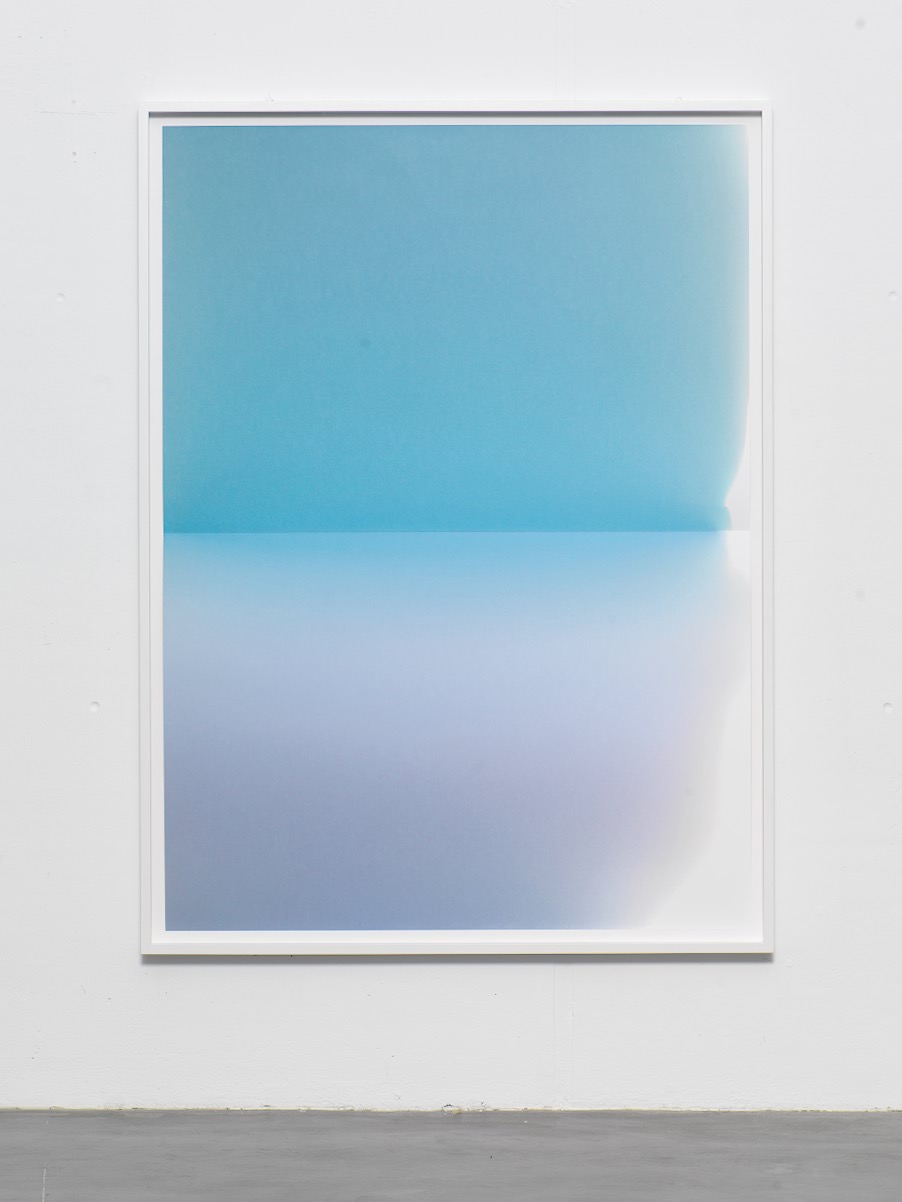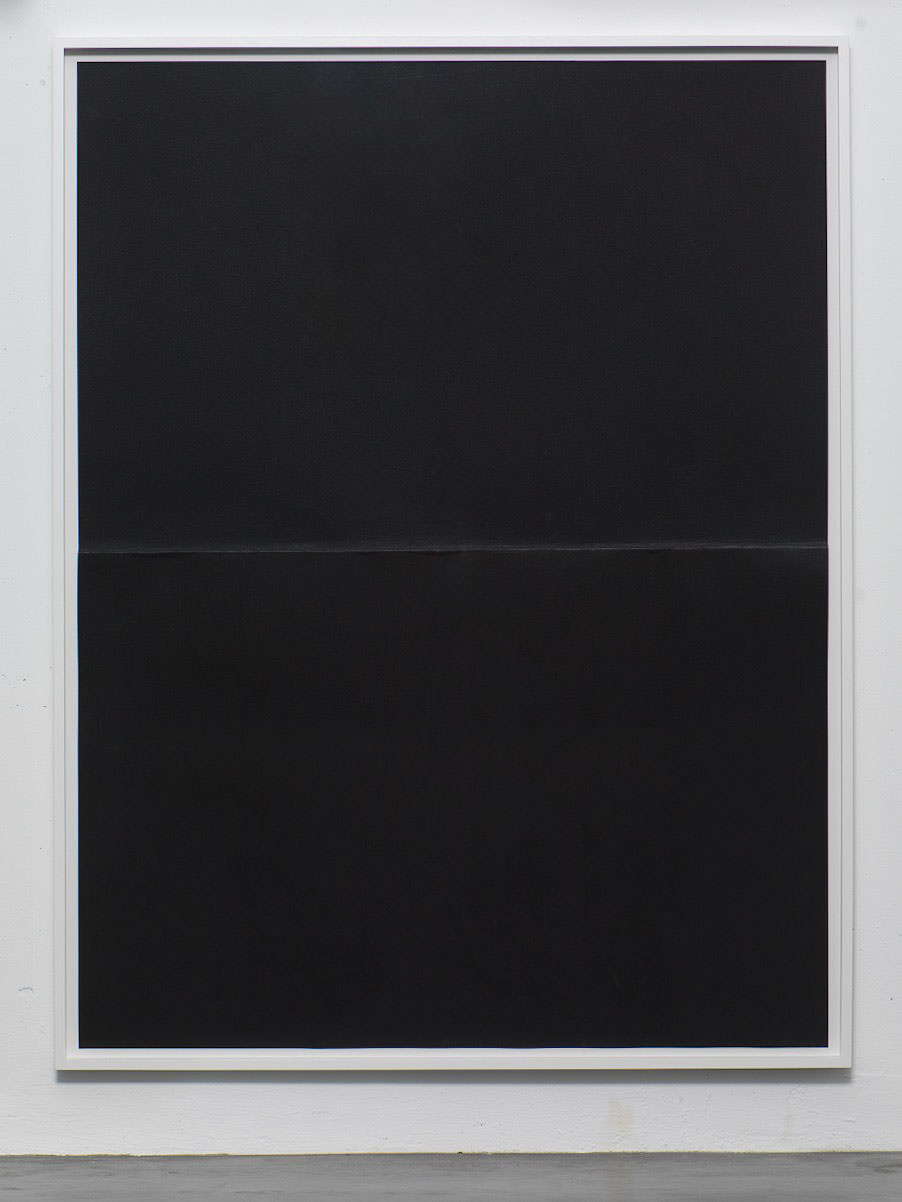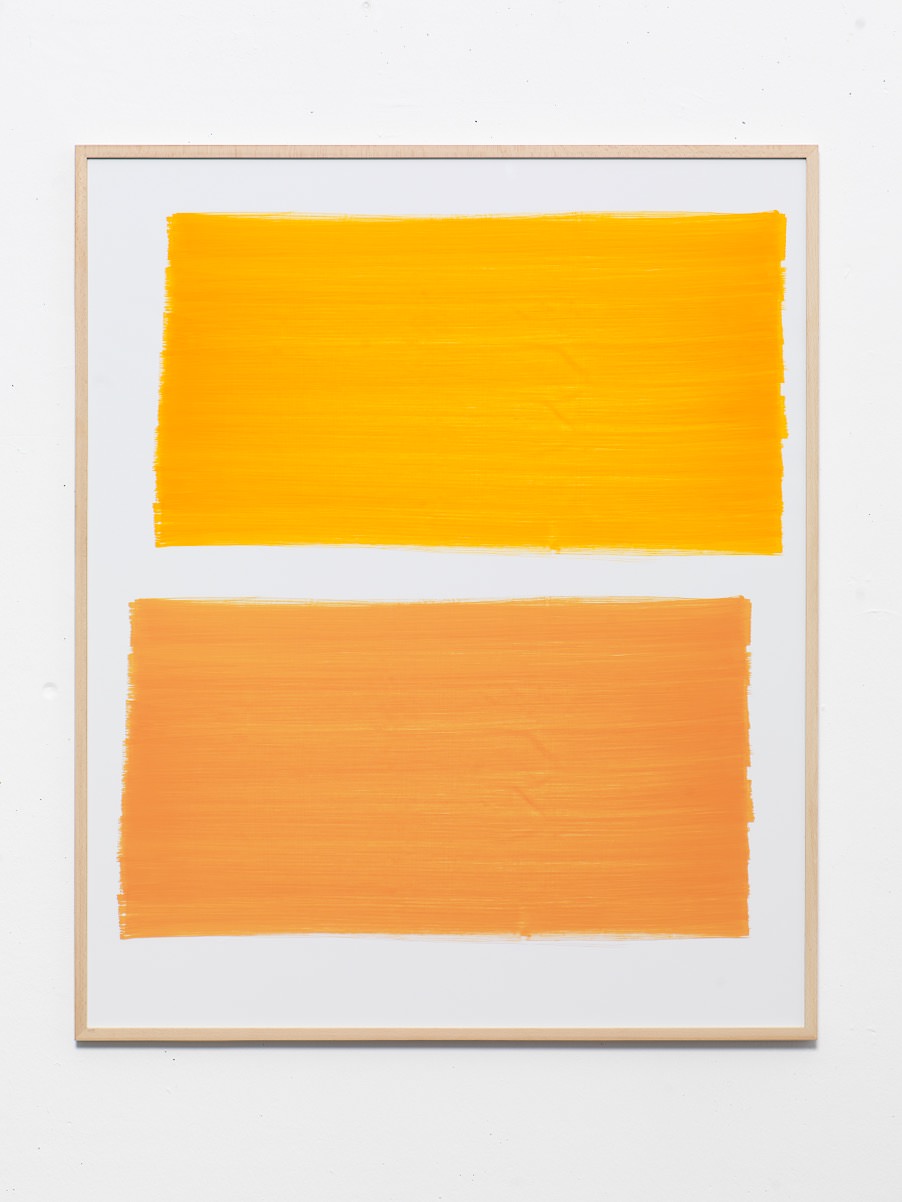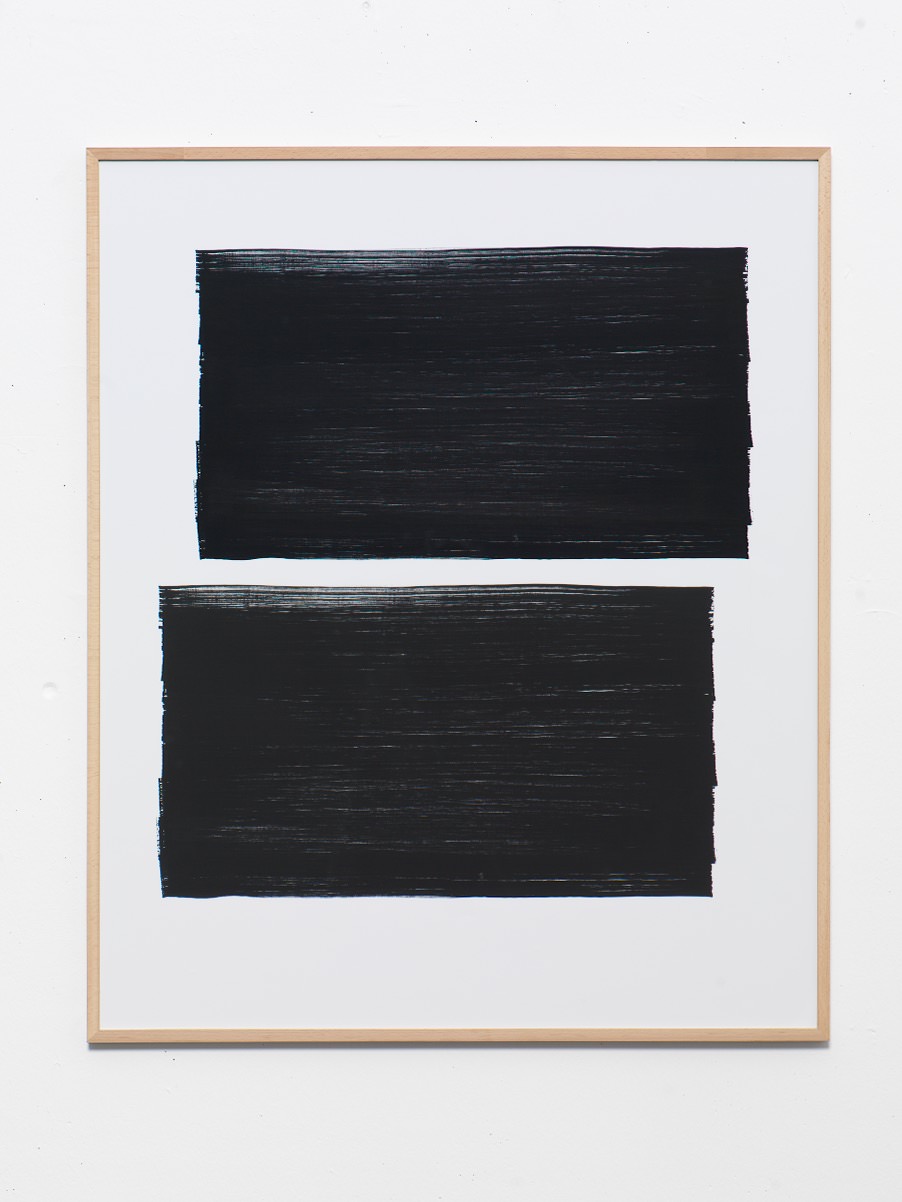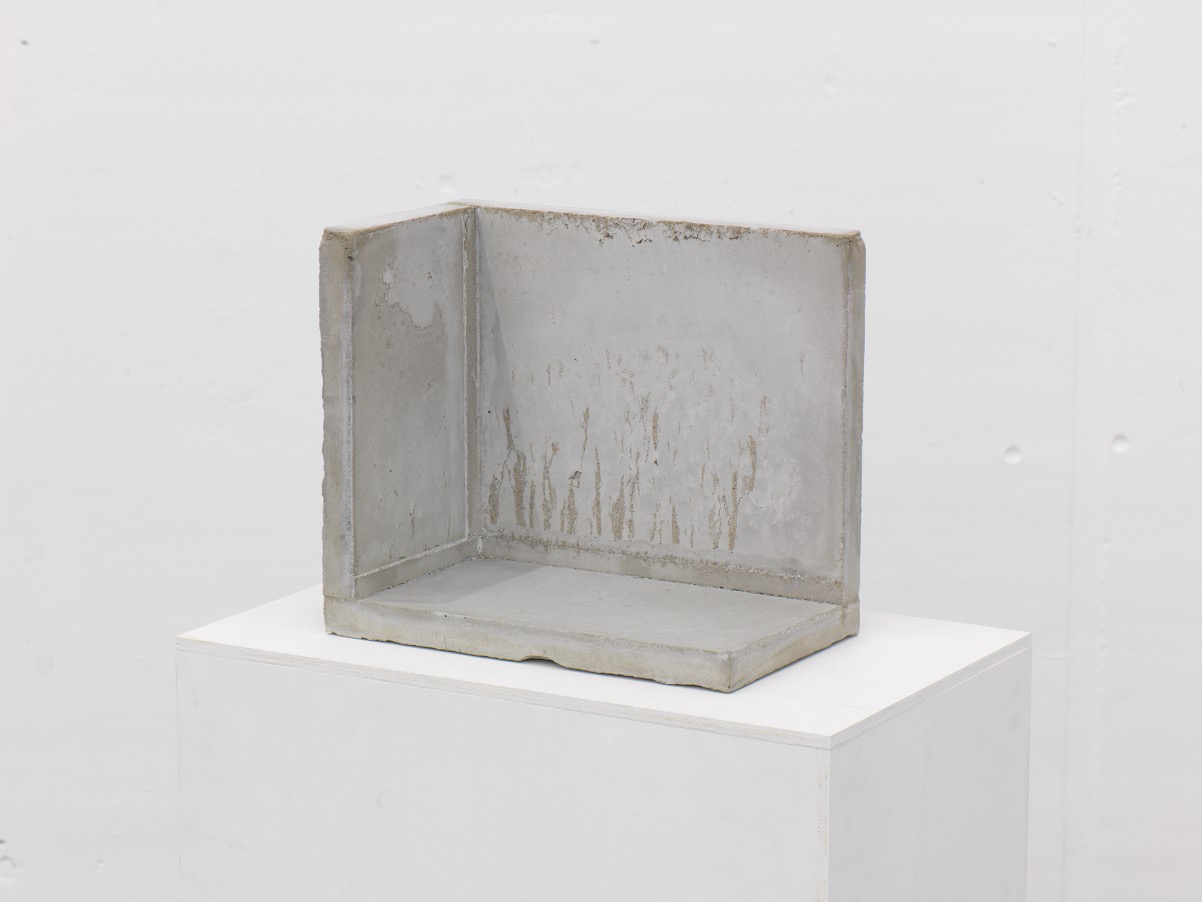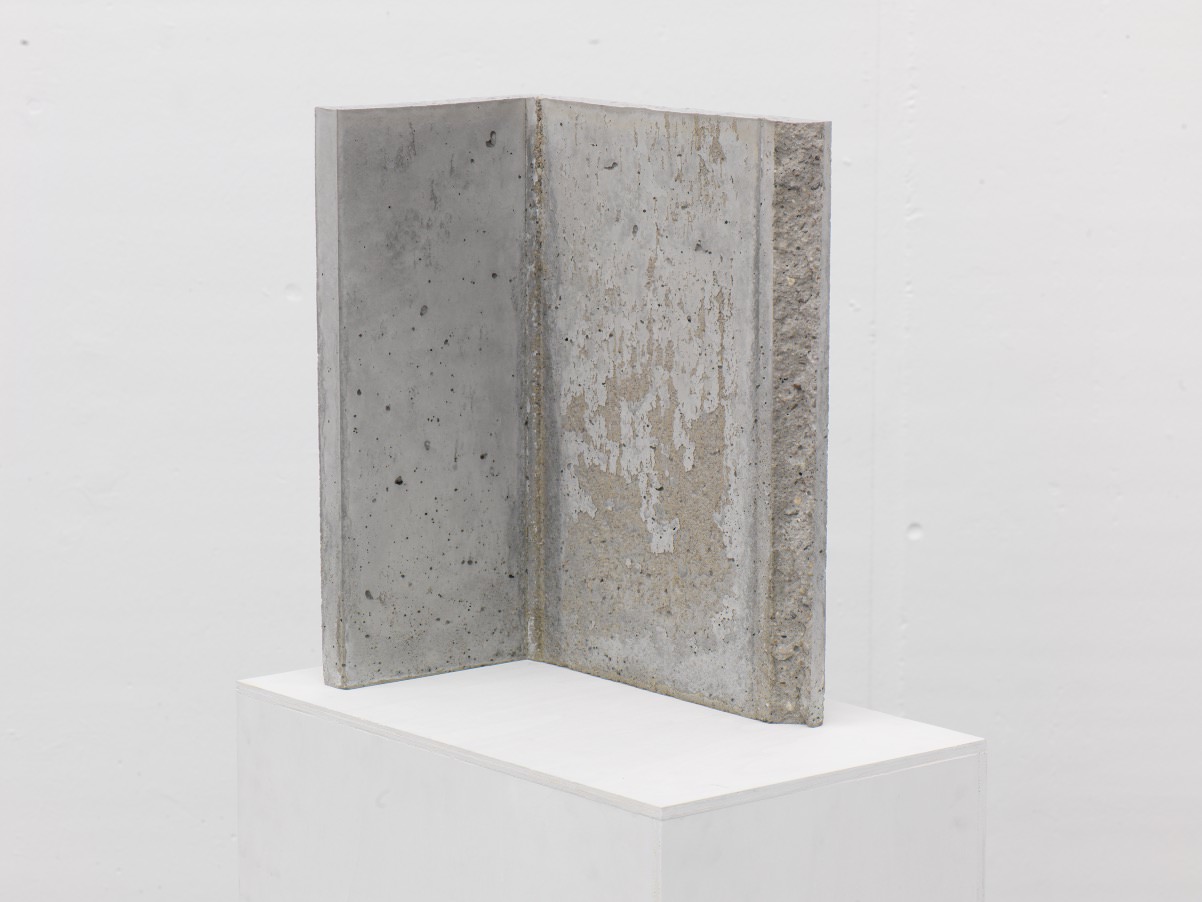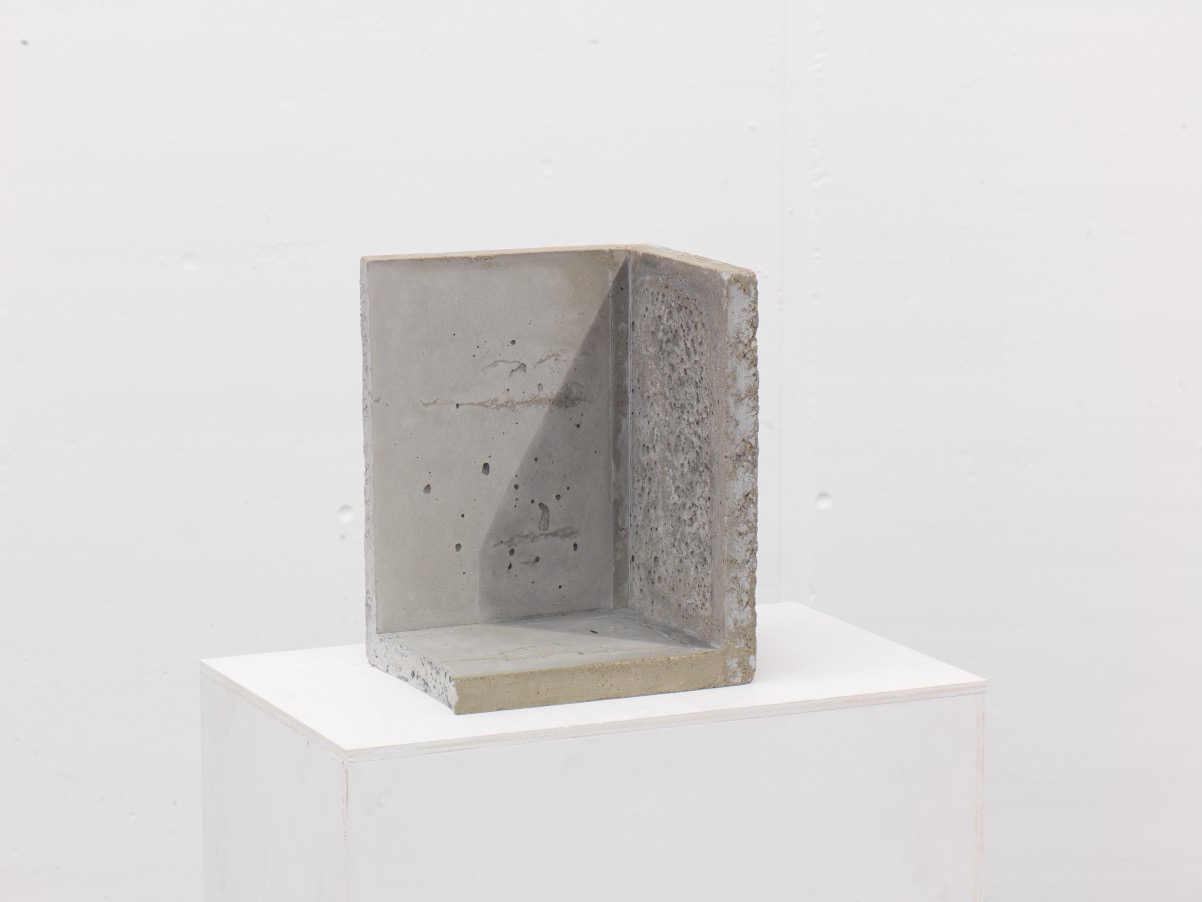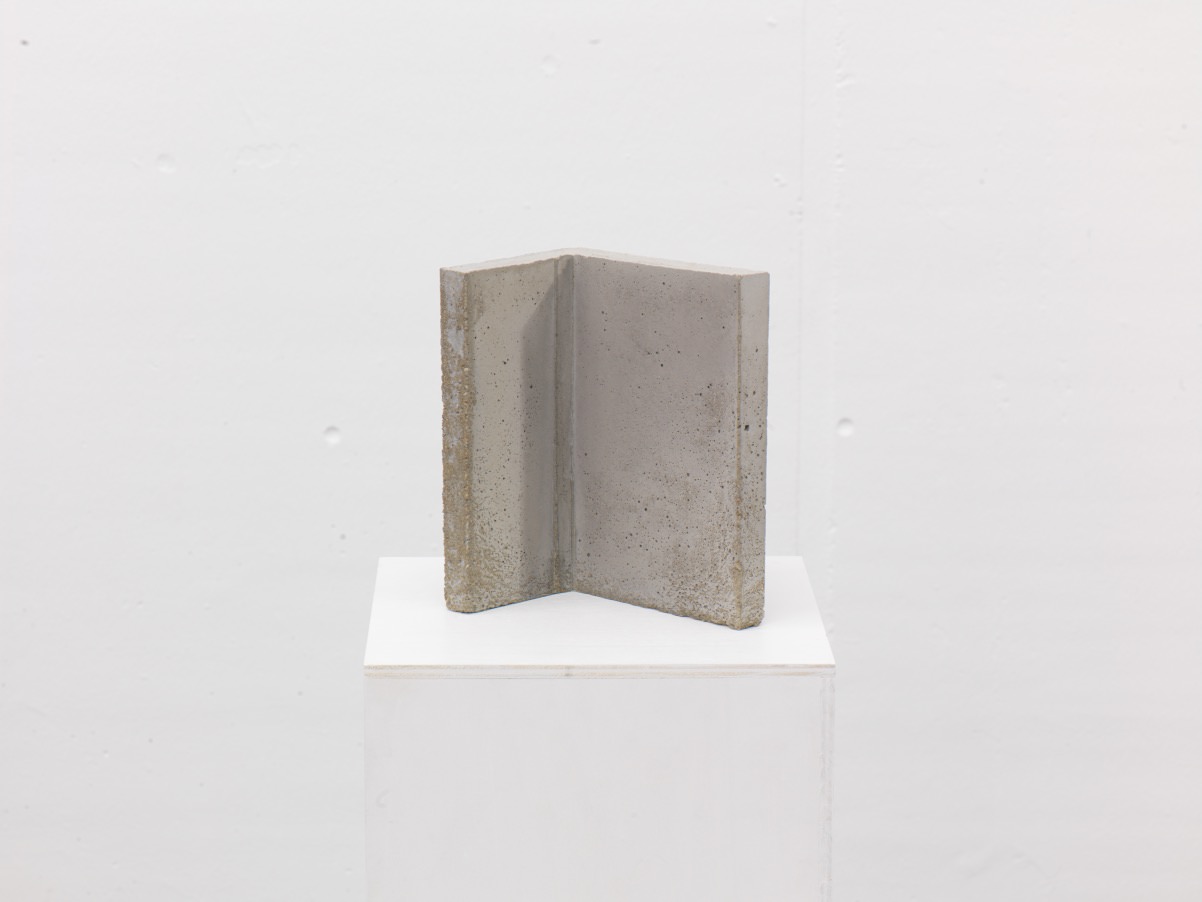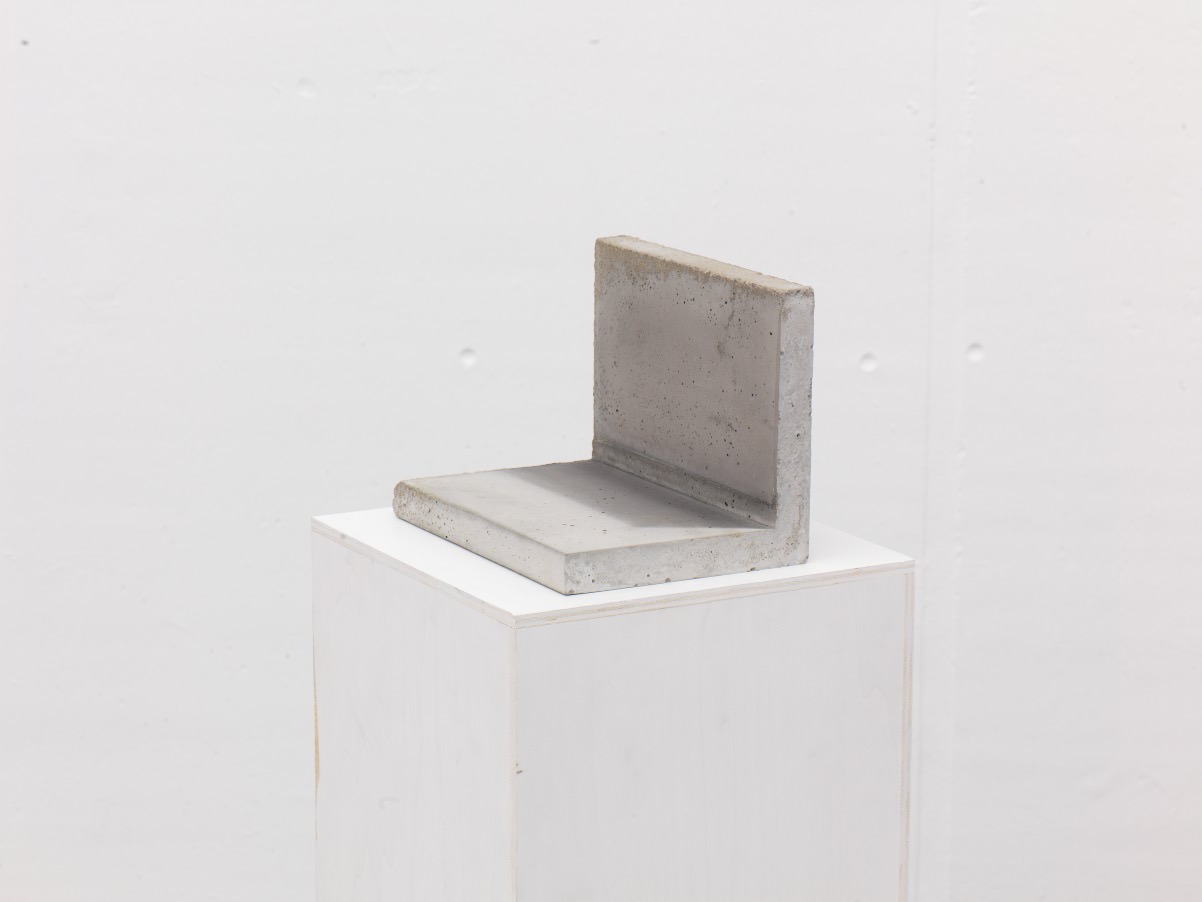„Noon“
June 12 – July 09, 2015
Johanna von Monkiewitsch, 2015, „o.T. (24. April 13:40)“, unique work + 1 AP, photography, pigment printed on Hahnemühle
paper, folded, 168 x 125 cm (66 x 49 inches)
Johanna von Monkiewitsch, 2015, „o.T. (20. April 14:45)“, unique work + 1 AP, photography, pigment printed on Hahnemühle
paper, folded, 168 x 125 cm (66 x 49 inches)
Johanna von Monkiewitsch, 2015, „o.T. (17. April 14:51)“, unique work + 1 AP, photography, pigment printed on Hahnemühle
paper, folded, 192 x 149 cm (75.6 x 59 inches)
Johanna von Monkiewitsch, 2015, „o.T. (13. Mai 07:12_1)“, unique work + 1 AP, copic marker and pigment printing on paper,
103 x 85 cm (40.5 x 33.5 inches)
Johanna von Monkiewitsch, 2015, „o.T. (13. Mai 07:12_2)“, unique work + 1 AP, copic marker and pigment printing on paper,
103 x 85 cm (40.5 x 33.5 inches)
Johanna von Monkiewitsch, 2015, „o.T. (04. Juni 2015 13:10), unique work, 34 x 20 x 30 cm, concrete, pigment
Johanna von Monkiewitsch, 2015, „o.T. (04. Juni 2015 12:02), unique work, 47.5 x 22 x 37 cm, concrete, pigment
Johanna von Monkiewitsch, 2015, „o.T. (21. April 2015 15:05), unique work, 33 x 26 x 20 cm, concrete, pigment
Johanna von Monkiewitsch, 2015, „o.T. (06. Januar 2015 12:13_2), unique work, 26 x 14 x 20 cm, concrete, pigment
Johanna von Monkiewitsch, 2015, „o.T. (06. Januar 2015 12:13_1), unique work, 20 x 20 x 28 cm, concrete, pigment
EXHIBITION TEXT GERMAN
by Barbara Hofmann-Johnson:
Noon – neue Arbeiten von Johanna von Monkiewitsch
Mit ihren abstrakten und subtil-minimalistischen Objektbildern, die in unterschiedlichen Formaten monochrome oder farblich zurückgenommene Papierfaltungen vorstellen, hat Johanna von Monkiewitsch in den vergangenen Jahren einen ästhetisch wie konzeptuell spannenden Beitrag zur zeitgenössischen Kunst geleistet. Basierend auf Photographien, die ihrerseits ebenfalls Papierfaltungen abbilden und Licht- und Schattenwirkungen als gestalterische Elemente erkennen lassen, spielen die Arbeiten der Künstlerin in reduzierter Weise mit der Tautologie des Bildes und seines Abbildes, mit der Frage nach Realität und Illusion. Als Zusammenspiel einer sich gegenseitig zitierenden Zwei- und Dreidimensionalität irritieren sie die Wahrnehmung, Raum und Zeit scheint metaphorisch durch Licht und Schatten angedeutet.
Bild, Abbild und Objekt, Realität und Illusion, Original und Reproduktion, Farbe, Licht, Schatten und Zeit erscheinen auch in den aktuellen Arbeiten von Johanna von Monkiewitsch als konzeptuelle Bezugspunkte für eine künstlerischen Untersuchung, die nunmehr verschiedene Medien im räumlichen Zusammenspiel einschließt.
Die Beschäftigung mit auf Photographien beruhenden großformatigen Papier-Faltungen setzt die in Köln lebende Künstlerin dabei fort. Als Erweiterung des bisherigen Konzeptes basieren diese nun jedoch nicht mehr auf photographischen Abbildungen von monochromen Papierfaltungen, sondern stellen Farb- und Lichtverläufe von Primärfarben vor, die Johanna von Monkiewitsch von einem farbigen Pergamentpapierblock aufnahm. In ihrer jeweiligen auratischen Wirkung erinnern die Licht-Farbverläufe an Mark Rothko und andere Positionen der Malerei, während die haptisch erkennbaren Falzungen und Wölbungen des photographischen Bildes dieses auch im Kontext einer reduzierten skulpturalen Setzung wahrnehmbar werden lässt.
Im Dialog und im materiellen Gegensatz zu den fast diaphan wirkenden Papierarbeiten erscheinen in der Ausstellung auch rudimentär belassene, eher kleinformatige Skulpturen-Winkel aus Beton sowie eine großformatige Anordnung von zwei aufeinandergestapelten rechteckigen Kuben aus schwarzem MDF.
Subtil wahrnehmbar lassen diese Arbeiten von der Künstlerin illusionistisch gesetzte Schatten erkennen, womit sie die Skulpturen in Raum und Zeit verorten.
Auch in einer weiteren Papierarbeit der Ausstellung geht es über deren abstrakt monochrome Bildlichkeit hinaus um Zeit, Vergänglichkeit und das Licht als gestalterisches und sinnstiftendes Moment. Sie zeigt zwei orangefarbene Doppel-Farbfelder. Basiert dabei das obere der monochromen Farbfelder auf einer Copic-Marker Zeichnung, erscheint das untere Rechteck als dessen leicht versetzte Reproduktion. Dem Licht ausgesetzt, wird das obere Rechteck wohl mehr und mehr verschwinden, während die mit hochwertigen Pigmentfarben gedruckte Reproduktion noch lange sichtbar sein wird. Die Frage nach der Aura von Original und Reproduktion wird im bildnerischen Zusammenhang im Verlauf der Jahre wohl noch zu klären sein.
So unterschiedlich die Medien und die Ästhetik der aktuellen Arbeiten von Johanna von Monkiewitsch sind, Licht, Zeit und Schatten werden in ihnen zu metaphorisch sinnstiftenden und verbindenden Momenten.
Hierfür beispielhaft ist auch eine in der Ausstellung gezeigte Videoprojektion über den Verlauf des Sonnenlichtes, wie er sich auf dem Fußboden im Atelier der Künstlerin einmal abzeichnete. Mit kontemplativer Bildlichkeit behandelt die Projektion die Zeit und wird für den Betrachter gleichzeitig auch als Zeit der Betrachtung unmittelbar erfahrbar.
Zeit ist existentiell bedeutsam und dabei eigentlich abstrakt. Datierungen und Zeitangaben sind für die Wahrnehmung und die Erinnerung relativ und lediglich Orientierungshilfen. Als motivisch-philosophisches und gleichzeitig abstraktes Moment bezieht Johanna von Monkiewitsch diesen Aspekt in ihren aktuellen Arbeiten spielerisch mit ein. Der Titel der Ausstellung Noon (Mittag) und die jeweiligen Werktitel, die als Zeitangaben Momente der Werkentstehung markieren, liefern hierzu ergänzend Assoziationsmomente. Ob sie fiktiv oder real sind, lässt sich ebenso wie bei den Schattenbildern auf den Skulpturen nicht ganz klären.
Minimalistisch konzentriert und dabei ästhetisch und atmosphärisch abwechslungsreich spielt Johanna von Monkiewitsch in ihren Arbeiten immer auch mit Verrätselung und Illusion, womit die Ausstellung und ihre neuen Arbeiten komplex erfahrbar werden.
EXHIBITION TEXT English
by Barbara Hofmann-Johnson:
Noon – New Works by Johanna von Monkiewitsch
With her abstract and subtly minimalist, object-like pictures of the past several years, which present monochrome or gently coloured folded paper in various formats, Johanna von Monkiewitsch has made an aesthetically and conceptually fascinating contribution to contemporary art. Based on photographs, which depict folded paper and reveal light and shadow effects as compositional elements, the Cologne-based artist’s works play in a subtle way with the tautology of the image and its reproduction, as well as with the question of reality and illusion. As the interaction of a mutually quotational two and three dimensionality, they irritate the viewer’s perception – time and space seem to be implied on a metaphorical level through the play of light and shadow.
In Johanna von Monkiewitsch’s recent works, image, reproduction and object, reality and illusion, original and copy, colour, light, shadow and time appear as conceptual points of reference for an artistic investigation, which now includes various media in spatial interaction with each other. Here, the artist’s preoccupation with large-scale folded paper based on photographs is carried further. As an extension of her previous concept, these are now no longer based on photographic depictions of monochromatic folded paper, but rather present the primary colours in gradients of tone and light, which Johanna von Monkiewitsch appropriated from a block of coloured parchment paper. In their respective auratic effect, the gradients of tone and light are reminiscent of works by Mark Rothko and other painterly positions, while the haptically perceptible folds and bends of the photographic image also allow these to be seen within the context of reduced sculptural adaptations.
Placed in dialogue with and in material contrast to the almost diaphanous paper works are various small-scale, rudimentarily worked sculptural concrete corners and a large-scale arrangement of two stacked rectangular cubes of black MDF.
Subtly perceptible, these works reveal illusionistic shadows placed by the artist, with which she anchors the sculptures in both time and space.
In other paper works presented in the exhibition, their abstract monochrome pictoriality is transcended to allow the viewer to focus on time, transience and light as creative and significative moments. They depict two double fields of orange colour: Whereas the upper monochrome colour field is based on a drawing executed in felt-tip marker, the lower rectangle appears to be a slightly shifted reproduction. Exposed to light, the upper rectangle will gradually disappear, whereas the reproduction printed with high-quality pigment dyes will remain visible for a much longer period of time. In this pictorial context, the question of the aura of the original and the reproduction will perhaps be clarified in the years to come.
As different as the media and aesthetics of the recent works by Johanna von Monkiewitsch may be, in each of them, light, time and shadow become metaphorically significative and cohesive moments.
A prime example of this is a video projection depicting the course of sunlight as it once moved across the floor of the artist’s studio. With its contemplative pictoriality, the projection addresses the theme of temporality, which also becomes directly perceptible to the viewer as the course of time of his own observation.
Time takes on existential meaning and, at the same time, remains more or less abstract. When it comes to perception and memory, dating and other time specifications are relative and nothing more than orientation guides. Johanna von Monkiewitsch playfully incorporates this aspect into her recent works as a philosophical and simultaneously abstract moment. The title of the exhibition, Noon, along with the titles of the individual works, which mark moments of their creation as time specifications, evoke complementary associations. As with the shadow pictures, the question as to whether they are real or fictional cannot be clearly discerned.
Minimalistically compact and yet aesthetically and atmospherically diverse, Johanna von Monkiewitsch’s works also always play with mystification and illusion, so that her recent works and the exhibition itself can be experienced on a number of different levels.
